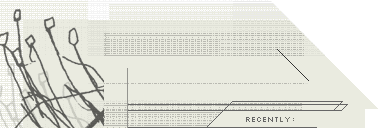The red cover art of Ry Cooder's expansive Chávez Ravine sticks
out on the record-store shelves. It's a simple, pencil-drawn cartoon by Michael
C. McMillen: a bulldozer driven by a chain-smoking skeleton, a mysterious,
retro-looking flying saucer hovering above, and massive amounts of destruction.
And while billing the release as "a record by Ry Cooder" might seem pretentious,
it's both accurate and appropriate. For Chávez Ravine is a story
set to music about a particular place at a particular time, all subsumed by Cooder's
mastery of the American folk tradition.
Here's the story: A long time ago, Chávez Ravine was a neighborhood
in Los Angeles with "a rural feel in [an] urban place," according to the liner
notes, and populated by recent Mexican immigrants who mostly just wanted peace
and quiet. White folks from Santa Monica never headed up that way — it was
too colorful, too laid-back, too different. But in the name of progress and urban
planning, the "right-wing politicos and 'bigness'-obsessed planners and developers" wanted
to set their mark on Los Angeles, and via red-baiting and character assassination
in the '40s and '50s displaced the residents and plowed over Chávez Ravine to
build Dodger Stadium. The city expanded, the color evaporated, and the process
set the stage for a dark period in America's history.
Chávez Ravine the album tells this tale (figuratively from the perspective
of a traveling flying-saucer pilot, a space vato) of how the coolest neighborhood
in Los Angeles was taken over by blandness and suburbanization. The music is
the magical blend of Tex-Mex and old-fashioned rhythm & blues, with legends old
and new guesting. Politics and history lessons aside, it's a record filled with
the mellow grooves of forgotten music that, if not as forgotten as the sounds
of Cooder's commercial blockbuster Buena Vista Social Club once were,
is
at
least
as significant.
R&B legend Little Willie G. — former lead singer in Thee Midniters ("Land
of 1000 Dances," "Whittier Blvd.," etc., etc.) — and David Hidalgo of Los
Lobos pen and sing "Onda Callegera" to a lilting guitar melody, about the time
sailors were dispatched to beat up Mexicans they found in the streets. The late
Lalo Guerrero (called "The Father of Chicano Music") sings his own "Los Chucos
Suaves," and Little Willie G. reprises the Lieber and Stoller hit "3 Cool Cats," all
with a melodic and percussive groove. Perhaps the prettiest song on the album, "3rd
Base, Dodger Stadium," is sung as a Latin lament by James "Bla" Pahinui, an innovator
of slack-key guitar, who Cooder calls the "homey of homies."
Cooder's wonderfully understated guitar-playing gets some bluesy twang out on "It's
Just Work for Me," which tells the story of the demolition from the perspective
of the bulldozer driver. Like the neighborhood that's been plowed over, this
is music that has been by-and-large forgotten by the same forces of greed and
progress, and the juxtaposition of the tunes and the story is striking.
But Chávez Ravine works because, ultimately, it isn't a history
lesson or museum piece. It's the sound of musicians, now on the periphery, playing
and singing the music they love, following the direction of a bona-fide master
whose vision just gets crisper and more pointed, all framed by a story that touches
us all. The songs feature magical music, and the tale connects the music together.
But ultimately it's the music that transcends the story to make something that's
truly moving. |

